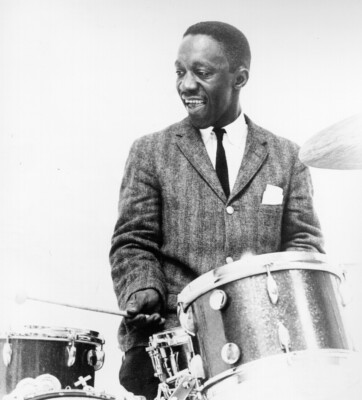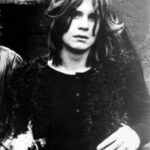Art Blakey

Art Blakey
Quick Facts
Biography
Art Blakey stands as one of the most influential drummers and bandleaders in jazz history. Renowned for his explosive style, dynamic leadership, and commitment to nurturing young talent, Art Blakey shaped the sound of modern jazz for more than four decades.
Early Life
Art Blakey was born on October 11, 1919, in Pittsburgh, Pennsylvania, United States. Growing up in a musical environment, Blakey began playing piano as a child before transitioning to drums in his teens. His early experiences in Pittsburgh’s vibrant jazz scene laid the foundation for a lifetime dedicated to music.
Career and The Jazz Messengers
Art Blakey’s career took off in the 1940s when he played with icons such as Fletcher Henderson and Billy Eckstine. However, it was with the formation of the Jazz Messengers in the 1950s that Blakey truly cemented his legacy. Under his leadership, the Jazz Messengers became a proving ground for emerging jazz talent, launching the careers of legendary musicians like Horace Silver, Wayne Shorter, Lee Morgan, Freddie Hubbard, and Wynton Marsalis.
Blakey’s drumming was distinguished by its powerful, driving rhythms and innovative polyrhythms. His energetic performances and signature press rolls brought a sense of urgency and excitement to the hard bop sound. Albums like “Moanin'” and “A Night in Tunisia” are celebrated for their passionate improvisation and ensemble interplay.
Achievements and Influence
Art Blakey’s contributions to jazz have been recognized with numerous awards and honors, including induction into the DownBeat Jazz Hall of Fame and a Grammy Lifetime Achievement Award. More importantly, his mentorship shaped generations of jazz musicians and solidified the Jazz Messengers’ reputation as a “school of jazz.”
Blakey’s influence extends beyond his recordings. His emphasis on improvisation, creativity, and education inspired countless drummers and bandleaders. Many who played under his direction went on to become major figures in jazz, demonstrating the lasting impact of his vision and generosity.
Personal Life and Legacy
Art Blakey converted to Islam in the late 1940s, adopting the name Abdullah Ibn Buhaina, though he continued to perform under his birth name. His personal life was marked by a deep commitment to music and a reputation for warmth and encouragement among peers and protégés.
Blakey passed away on October 16, 1990, in New York City, but his legacy endures. The Jazz Messengers’ recordings remain essential listening for jazz enthusiasts, and his approach to mentorship and collaboration continues to inspire musicians worldwide.
For those interested in exploring more about jazz legends, learn about the influential careers of Wayne Shorter and Horace Silver, both of whom were closely associated with Art Blakey.
Conclusion
Art Blakey’s passionate drumming, visionary leadership, and dedication to nurturing emerging talent have made him a central figure in the story of jazz. Whether through his iconic performances or the success of his many protégés, Art Blakey’s influence will resonate for generations to come.
Detailed Information
| Full Name | Arthur Blakey |
| Gender | Male |
| Religion | Islam |
| Years Active | 1942–1990 |
| Known For | Jazz drummer and bandleader, leader of the Jazz Messengers |
| Major Achievements | Grammy Lifetime Achievement Award, DownBeat Jazz Hall of Fame induction |



